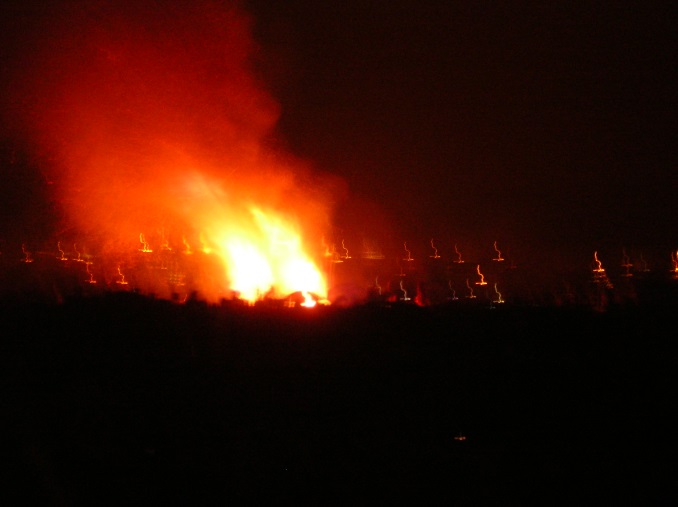Festival of Samhain

The ancient Celtic holiday of Samhain (Halloween) was the start of the Celtic New Year. This is when the Druids lit bonfires marking a period of great danger to mortal souls. The bonfires were a warning that the laws of nature were suspended and the barriers between the natural order of things and the Celtic Underworld were dissolved, when the Underworld became visible to the living and the Fairies and the Dead would come forth.
Ordinary folk were highly vulnerable to being kidnapped by Fairies and taken to the Underworld at this time and it was ill advised to go near the many "Fairie Mounds" which are said to have dotted the Celtic countryside.
In his work "Tlachtga – Celtic Fire Festival", John Gilroy notes:
The unwary traveler, caught away from home on this night, could expect to encounter any one or many of these creatures and it was always advisable to stay indoors.
To supplicate the goblins that were unleashed at Samhain, rituals devloped which invloved providing hospitality for dead ancestors who may have been amongst the visitors from the Otherworld.
Another tactic to ward off the unpleasant guests may have been to "Dress Up For Halloween". Jenny Butler, Folklorist at University College Cork's Folklore and Ethnology Departments states in an interview published by the Archelogical Institute of America:
One of the theories of guising and dressing as ghosts may be the notion that the dead are returning on this night and the change of appearance may protect the human from being recognized by the returning spirits of the dead.
One suspects that this did not fool the Fairies. Something for us all to keep in mind this Halloween is that if you are not staying indoors, you better have a convincing costume.
Further reading
Interview with Dr. Jenny Butler: The Celtic Folklore Traditions of Halloween
Content type:
- Pan-Celtic
Language:
- English






